Forex System |
- Why Most Traders Fail and How to Increase Trading Success
- Motivational Video For Forex Traders (Must Watch)
- BOC, RBA, & RBNZ Interest Rate Expectations Update
- What Should You Learn How to Trade First? {stocks, options, forex, crypto…}
- Fibonacci Confluence on FX Pairs
- How To Combine Trading Indicators (For Forex, Crypto & Stock Market)
- 3 Entry Strategies To Try
- TradingView Tutorial: 5+1 (Little-Known) Features to Boost your Forex Trading Results [2021]
- USD/JPY Rate Eyes March 2017 High as Bull Flag Formation Unfolds
- D1 Forex Always Profitable Special and Secret Strategy | Long Term Forex Trading Hammer Strategy
| Why Most Traders Fail and How to Increase Trading Success Posted: 18 Nov 2021 11:37 AM PST Halloween Sale! Buy 1 get 10% off, Buy 2 get 15% Shop Now https://www.dresslily.com/promotion/Halloween-pre.html Hot deals ,ALL $12.99 Hot deals ,ALL $9.99 Hot deals ,ALL $6.99 ------------------------------------ What is the Number One Mistake Traders Make?Big financial market volatility and growing access for the average person have made active trading very popular, but the influx of new traders has met with mixed success. There are certain patterns which may separate profitable traders from those who ultimately lose money. And indeed, there is one particular mistake that in our experience gets repeated time and time again. What is the single most important mistake that led to traders losing money? Here is a hint – it has to do with how we as humans relate to winning and losing Our own human psychology makes it difficult to navigate financial markets, which are filled with uncertainty and risk, and as a result the most common mistakes traders make have to do with poor risk management strategies. Traders are often correct on the direction of a market, but where the problem lies is in how much profit is made when they are right versus how much they lose when wrong. Bottom line,traders tend to make less on winning trades than they lose on losing trades. Before discussing how to solve this problem, it is a good idea to gain a better understanding of why traders tend to make this mistake in the first place. A Simple Wager – Understanding Decision Making via Winning and LosingWe as humans have natural and sometimes illogical tendencies which cloud our decision-making. We will draw on simple yet profound insight which earned a Noble Prize in Economics to illustrate this common shortfall. But first a thought experiment: What if I offered you a simple wager based on the classic flip of a coin? Assume it is a fair coin which is equally likely to show "Heads" or "Tails", and I ask you to guess the result of a single flip. If you guess correctly, you win $1,000. Guess incorrectly, and you receive nothing. But to make things interesting, I give you Choice B—a sure $400 gain. Which would you choose?
From a logical perspective, Choice A makes the most sense mathematically as you can expect to make $500 and thus maximize profit. Choice B isn't wrong per se. With zero risk of loss you could not be faulted for accepting a smaller gain. And it goes without saying you stand the risk of making no profit whatsoever via Choice A—in effect losing the $400 offered in Choice B. It should then come as little surprise that similar experiments show most will choose "B". When it comes to gains, we most often become risk averse and take the certain gain. But what of potential losses? Consider a different approach to the thought experiment. Using the same coin, I offer you equal likelihood of a $1,000 loss and $0 in Choice A. Choice B is a certain $400 loss. Which would you choose?
In this instance, Choice B minimizes losses and thus is the logical choice. And yet similar experiments have shown that most would choose "A". When it comes to losses, we become 'risk seeking'. Most avoid risk when it comes to gains yet actively seek risk if it means avoiding a loss. A hypothetical coin flip exercise is hardly something to lose sleep over, but this natural human behavior and cognitive dissonance is clearly problematic if it extends to real-life decision making. And, it is indeed this dynamic which helps to explain one of the most common mistakes in trading. Losses hurt psychologically far more than gains give pleasure. Daniel Kahneman and Amos Tversky published what has been called a "seminal paper in behavioral economics" which showed that humans most often made irrational decisions when faced with potential gains and losses. Their work wasn't specific to trading but has clear implications for our studies. The core concept was simple yet profound: most people make economic decisions not on expected utility but on their attitudes towards winning and losing. It was simply understood that a rational person would make decisions purely based on maximizing gains and minimizing losses, yet this is not the case; and this same inconsistency is seen in the real world with traders… We ultimately aim to turn a profit in our trades; but to do so, we must force ourselves to work past our natural emotions and act rationally in our trading decisions. If the ultimate goal were to maximize profits and minimize losses, a $500 gain would completely offset a $500 loss. This relationship is not linear, however; the illustration below gives us an approximate look at how most might rank their "Pleasure" and "Pain" derived from gains and losses. Prospect Theory: Losses Typically Hurt Far More than Gains Give Pleasure
Figure 3. Licensed under CC BY-SA 3.0 via Wikimedia Commons The negative feeling experienced from a $500 loss can be substantially more than the positive feeling experienced from a $500 gain, and experiencing both would leave most feeling worse despite causing no monetary loss. In practice, we need to find a way to straighten that utility curve—treat equivalent gains and losses as offsetting and thus become purely rational decision-makers. This is nonetheless far easier said than done.
Figure 4. Licensed under CC BY-SA 3.0 via Wikimedia Commons A High Win Percentage Should Not be the Primary GoalYour primary goal should be to find trades which give you an edge and present an asymmetrical risk profile. This means your primary objective should be to achieve a robust "Risk/Reward" (R/R) ratio, which is simply the ratio of how much you have at risk versus how much you gain. Let's say you are right about 50% of the time, a reasonable expectation. Your gains and losses need to have at least a 1:1 risk/reward ratio if you stand to at least break even. To tilt the math in your favor, a trader making money on roughly 50% of his/her trades needs to aim for a higher unit of reward versus risk, say 1.5:1 or even 2:1 or greater. Too many traders get hung up on trying to achieve a high win percentage, which is understandable when you think about the research we looked at earlier regarding loss aversion. And, in your own experiences you almost certainly recognize the fact that you don't like losing. But from a logical standpoint, it isn't realistic to expect to be right all the time. Losing is just part of the process, a fact that as a trader you must get comfortable with. It is more realistic and beneficial to achieve a 45% win rate with a 2:1 R/R ratio, than it is to be right on 65% of your trade ideas, but with only a 1:2 risk/reward profile. In the short run the gratification of "winning" more often may make you feel good, but over time not netting any gains will lead to frustration. And a frustrated mind will almost certainly lead to more mistakes. The following table illustrates the math well. Over the course of a 20 trade sample, you can see clearly how a favorable risk/reward profile coupled with more losers than winners can be more productive than an unfavorable risk/reward profile coupled with a much greater number of winners. The trader making money on 45% of trades with a 2:1 R:R profile comes out ahead, while the trader with the 65% win rate, but making only half as much on winners versus losers, comes out at a slight net-loss.
Who would you rather be? The trader who ends up positive 7 units but loses more often than they win, or the one who ends up slightly negative but gets the gratification of "being right" more often. The choice appears to be easy. Use Stops and Limits – Good Money ManagementHumans aren't machines, and working against our natural biases requires effort. Once you have a trading plan that uses a proper reward/risk ratio, the next challenge is to stick to the plan. Remember, it is natural for humans to want to hold on to losses and take profits early, but it makes for bad trading. We must overcome this natural tendency and remove our emotions from trading. A great way to do this is to set up your trade with Stop-Loss and Limit orders from the beginning. But don't set them for the sake of setting them to achieve a specific ratio. You will want to still use your analysis to determine where the most logical prices are to place your stops and limit orders. Many traders use technical analysis, which allows them to identify points on the charts that may invalidate (trigger your stop-loss) or validate your trade (trigger the limit order). Determining your exit points ahead of time will help ensure you pursue the proper reward/risk ratio (1:1 or higher) from the outset. Once you set them, don't touch them. (One exception: you can move your stop in your favor to lock in profits as the market moves in your favour.) There will inevitably be times a trade moves against you, triggers your stop loss, and yet ultimately the market reverses in the direction of the trade you were just stopped out of. This can be a frustrating experience, but you have to remember this is a numbers game. Expecting a losing trade to turn in your favor every time exposes you to additional losses, perhaps catastrophic if large enough. To argue against stop losses because they force you to lose is very much self-defeating—this is their very purpose. Managing your risk in this way is a part of what many traders call "money management". It is one thing to be on the right side of the market, but practicing poor money management makes it significantly more difficult to ultimately turn a profit. Game Plan: Tying it All TogetherTrade with stops and limits set to a reward/risk ratio of 1:1, and preferably higher Whenever you place a trade, make sure that you use a stop-loss order. Always make sure that your profit target is at least as far away from your entry price as your stop-loss is, and again, as we stated previously, you should ideally aim for an even larger risk/reward ratio. Then you can choose the market direction correctly only half the time and still net a positive return in your account. The actual distance you place your stops and limits will depend on the conditions in the market at the time, such as the volatility, and where you see support and resistance. You can apply the same reward/risk ratio to any trade. If you have a stop level 40 points away from entry, you should have a profit target 40 points or more away to achieve at least a 1:1 R/R ratio. If you have a stop level 500 points away, your profit target should be at least 500 points away. To summarize, get comfortable with the fact that losing is part of trading, set stop-losses and limits to define your risk ahead of time, and aim to achieve proper risk/reward ratios when planning out trades.
Source link Click to rate this post! [Total: 0 Average: 0] | ||||||||||||||||||
| Motivational Video For Forex Traders (Must Watch) Posted: 18 Nov 2021 11:08 AM PST Halloween Sale! Buy 1 get 10% off, Buy 2 get 15% Shop Now https://www.dresslily.com/promotion/Halloween-pre.html Hot deals ,ALL $12.99 Hot deals ,ALL $9.99 Hot deals ,ALL $6.99 ------------------------------------ Consider Global Prime for your next trade. We don't profit from client losses, ever.
Join our FREE DISCORD chatroom if you’d like to interact with our community of thousands of traders with a relentless passion for trading:
New to our channel? Watch these videos source Click to rate this post! [Total: 0 Average: 0] | ||||||||||||||||||
| BOC, RBA, & RBNZ Interest Rate Expectations Update Posted: 18 Nov 2021 10:35 AM PST Halloween Sale! Buy 1 get 10% off, Buy 2 get 15% Shop Now https://www.dresslily.com/promotion/Halloween-pre.html Hot deals ,ALL $12.99 Hot deals ,ALL $9.99 Hot deals ,ALL $6.99 ------------------------------------ Central Bank Watch Overview:
Rising Inflation Pushing Central BanksIn this edition of Central Bank Watch, we're examining the rates markets around the Bank of Canada, Reserve Bank of Australia, and Reserve Bank of New Zealand. Policymakers are facing increasingly difficult decisions as the global economy moves out of the coronavirus pandemic, leading to volatile swings in rate hike pricing. Both realized and expected measures of inflation are reaching record highs, provoking acceleration in rate hike odds implied by markets for the BOC and RBNZ in recent weeks. Meanwhile, policy officials at the RBA are continuing to downplay the odds of a rate move in 2022, even as markets are still pricing in the first hike by July 2022. For more information on central banks, please visit the DailyFX Central Bank Release Calendar. BOC's Mixed SignalsCanadian inflation rates jumped to 20-year highs in October, but the BOC has already been cautioning that the data don't mean that a rate hike will arrive any sooner than what markets had already been discounting. Earlier this week, BOC Deputy Governor Lawrence Schembri said that "there’s a lot of uncertainty about the timing of the closing of the output gap, so one should be careful not assuming it’s necessarily going to be the second quarter. It’s a range of six months — that’s our best estimate." Bank of Canada Interest Rate Expectations (November 18, 2021) (Table 1)In light of comments from BOC policymakers and the October Canada inflation report, rates markets are expecting March 2022 for the first rate hike (100% chance for a 25-bps rate hike, 7% chance for a 50-bps rate hike). This is a slight difference from a week ago, when markets were anticipating March 2022 for the first 25-bps rate hike, but the odds of a 50-bps hike were higher at 31%. IG Client Sentiment Index: USD/CAD Rate Forecast (November 18, 2021) (Chart 1)USD/CAD: Retail trader data shows 60.91% of traders are net-long with the ratio of traders long to short at 1.56 to 1. The number of traders net-long is 3.74% lower than yesterday and 2.04% lower from last week, while the number of traders net-short is 19.69% higher than yesterday and 16.08% higher from last week. We typically take a contrarian view to crowd sentiment, and the fact traders are net-long suggests USD/CAD prices may continue to fall. Yet traders are less net-long than yesterday and compared with last week. Recent changes in sentiment warn that the current USD/CAD price trend may soon reverse higher despite the fact traders remain net-long. RBA Warns on HikesWe've seen Australian economic data disappoint in recent weeks, and as a result, RBA policymakers have been cautioning that rate hikes may not arrive as quickly as markets are anticipating – even as measures of Australia inflation continue to move higher. RBA Governor Philip Lowe said that "the economy and inflation would have to turn out very differently from our central scenario for the board to consider an increase in interest rates next year." Rates markets still think otherwise, however. RESERVE BANK OF AUSTRALIA INTEREST RATE EXPECTATIONS (November 18, 2021) (TABLE 2)Even as RBA Governor Lowe has warned that rate hikes aren't coming in 2022, traders believe that economic data will improve to the point that the Australian central bank will raise rates early in the second half of 2022. While Australia overnight index swaps (OIS) were pricing in a 58% chance of the first 25-bps rate hike to arrive by June 2022, July 2022 is now favored for the first rate move with an implied probability of 68%. IG Client Sentiment Index: AUD/USD Rate Forecast (NOVEMBER 18, 2021) (Chart 2)AUD/USD: Retail trader data shows 64.74% of traders are net-long with the ratio of traders long to short at 1.84 to 1. The number of traders net-long is 6.07% higher than yesterday and 14.66% higher from last week, while the number of traders net-short is 5.10% lower than yesterday and 4.04% lower from last week. We typically take a contrarian view to crowd sentiment, and the fact traders are net-long suggests AUD/USD prices may continue to fall. Traders are further net-long than yesterday and last week, and the combination of current sentiment and recent changes gives us a stronger AUD/USD-bearish contrarian trading bias. RBNZ Looking More AggressiveRates markets are pricing in the most aggressive rate hike cycle by a major central bank in the post-Global Financial Crisis era over the next year for the RBNZ. The 4Q'21 New Zealand inflation expectations data earlier this week bolstered the narrative, with the 2-year inflation expectation jumping to +2.96% from +2.27%; the 1-year inflation expectation surged to an 11-year high of +3.7%. In the wake of the data, rates markets are on the verge of pricing in 50-bps worth of hikes when the RBNZ meets next week. RESERVE BANK OF NEW ZEALAND INTEREST RATE EXPECTATIONS (NOVEMBER 18, 2021) (Table 3)Last week, New Zealand OIS were implying a 140% chance of a hike at the November meeting (100% chance of a 25-bps rate hike; 40% chance of a 50-bps rate hike). After the New Zealand inflation expectations figures, there is now a 142% chance of a hike (100% chance of a 25-bps rate hike; 42% chance of a 50-bps rate hike). If the RBNZ only delivers a 25-bps rate hike, however, this could represent a disappointment relative to expectations, leading to weakness in NZD-crosses. It may be the case that RBNZ rate hike pricing is an albatross around the Kiwi's neck for the foreseeable future. IG Client Sentiment Index: NZD/USD Rate Forecast (NOVEMBER 18, 2021) (Chart 3)NZD/USD: Retail trader data shows 50.85% of traders are net-long with the ratio of traders long to short at 1.03 to 1. The number of traders net-long is 0.91% lower than yesterday and 26.15% higher from last week, while the number of traders net-short is 3.06% lower than yesterday and 7.85% lower from last week. We typically take a contrarian view to crowd sentiment, and the fact traders are net-long suggests NZD/USD prices may continue to fall. Traders are further net-long than yesterday and last week, and the combination of current sentiment and recent changes gives us a stronger NZD/USD-bearish contrarian trading bias. Read more: New Zealand Dollar Forecast: RBNZ Weighs on Kiwi – Setups for NZD/JPY, NZD/USD — Written by Christopher Vecchio, CFA, Senior Strategist
Source link Click to rate this post! [Total: 0 Average: 0] | ||||||||||||||||||
| What Should You Learn How to Trade First? {stocks, options, forex, crypto…} Posted: 18 Nov 2021 10:07 AM PST Halloween Sale! Buy 1 get 10% off, Buy 2 get 15% Shop Now https://www.dresslily.com/promotion/Halloween-pre.html Hot deals ,ALL $12.99 Hot deals ,ALL $9.99 Hot deals ,ALL $6.99 ------------------------------------ I get this common question all the time from beginners who are wanting to know “how to get started” with trading the financial markets. Should these new traders get started with stocks? What about options or Forex? Maybe the beginner trader is wondering about cryptocurrency or futures. What should you learn how to trade first? That’s a very wise question to be asking and something that I hope all beginner traders are considering. The tricky thing with the question is while it is totally logical and wise, it’s actually not right. What do I mean? Let me show you what you should first learn about as a trader. Whether you are wanting to be a day trader, swing trader, or investor, there is one area of the market that you first need to focus on. By focusing on this area of the market you will expand your horizons and flexibility in regards to your money making opportunities as a trader. What do I mean? Let me show you the one question you need to be able to answer and the tool that you can use in order to help you answer it. Know how to answer this question and you can then move into trading whatever financial asset you’d like. This Free Event Reveals: How I transformed myself from an employee to my own boss (and how you can too, even with no experience!). Register: https://claytrader.com/1-hour-trader-transformation/?utm_source=social&utm_medium=youtube Enjoy this Free Content? I’m confident you’d enjoy my premium training courses then: https://claytrader.com/training/?utm_source=social&utm_medium=youtube Hear real-life trading journeys from “normal” people: The Stock Trading Reality Podcast – https://claytrader.com/podcast/?utm_source=social&utm_medium=youtube Pick up some ClayTrader gear at https://daytradergear.com/?utm_source=social&utm_medium=youtube source Click to rate this post! [Total: 0 Average: 0] | ||||||||||||||||||
| Fibonacci Confluence on FX Pairs Posted: 18 Nov 2021 09:34 AM PST Halloween Sale! Buy 1 get 10% off, Buy 2 get 15% Shop Now https://www.dresslily.com/promotion/Halloween-pre.html Hot deals ,ALL $12.99 Hot deals ,ALL $9.99 Hot deals ,ALL $6.99 ------------------------------------ Talking Points: – As looked at earlier in this module,Fibonacci retracements can help traders to identify possible support/resistance. – We've previously discussed how a trader can use Fibonacci retracements on long-term-charts, and by focusing on multiple major moves traders may be able to glean confluent areas of support/resistance. This can provide multiple reasons for buyers or sellers to defend these key spots on the chart, keeping the door open for reversals or retracements. Fibonacci is wrapped in mystique, and this makes the story around it that much more interesting. But for applicability in markets, the simple version is that Fibonacci retracement levels offer potential areas for support and/or resistance to develop; and because market participants may use these levels in their analysis and, in turn, because these prices have potential impact for price behavior, this can be an excellent addition to the FX traders repertoire of support and resistance analysis. Origins Italian mathematician Leonardo Fibonacci is credited with finding the Fibonacci sequence in the 13th century, hence the name 'Fibonacci'. And while his book Liber Abaci introduced the Fibonacci sequence to the western world, traces can actually be found going back as far as 200 BC in Indian mathematics. The sequence is fairly simple: Two numbers added together produce the next value. So 1+1 = 2, and then 1+2 = 3, and then 2+3 = 5, 5+3 = 8, and so on. The first 22 values of the Fibonacci sequence are printed below: 1, 1, 2, 3, 5, 8, 13, 21, 34, 55, 89, 144, 233, 377, 610, 987, 1597, 2584, 4181, 6765, 10946, 17711 This starts to get interesting once we look at the numbers relationship within the sequence to each other. If we take a value and divide by the preceding value, we will get a number approximately close to 161.8%. So, each number in the sequence is 161.8% greater than the prior value after we get out of the initial portion of the sequence (after the value of 89). This is the Golden Ratio of 161.8%. 17711/10946 = 1.61803 10946/6765 = 1.61803 6765/4181 = 1.61803 What struck Fibonacci almost a thousand years ago and the same thing that amazed a thousand years before that is how widely this ratio, and this sequence can be found in the world around us. In Liber Abaci, Fibonacci used the mating cycle of rabbits as an example, showing how rabbit populations in isolation would grow according to the numerical sequence of 1, 1, 2, 3, 5, 8, 13, etc. But this is just the tip of the iceberg, the number of flower petals will often follow the sequence: Lilies have three petals while buttercups have five, chicory's have 21 and daisies have 34. Each petal is placed at .618 per turn in order to allow for maximum sunlight. Tree branches, in the way that trunks split and in the way that branches will grow, display the Fibonacci sequence. Shells, hurricanes – even human faces adhere to the Golden ratio in a geometric spiral pattern. Right now, you can look down at your right arm to notice that you probably have eight fingers, five on each hand, three bones in each finger,two bones in each one thumb and one thumb on each hand. Oh – and the ratio between your forearm and hand – that probably applies by the Golden ratio, as well. Applicability to Markets While the application of Fibonacci in nature keeps many graduate level mathematics students busy, traders have more pressing concerns: Applying the study to financial markets. In its most common form, Fibonacci is the use of the golden ratio in support and resistance analysis. So, plot a significant move, draw a line at 61.8% of that move, and we have an area to watch for a possible retracement to find support. The reciprocal of .618 is .382, so this gives us another value to work with at the 38.2% level. On the chart below, we're looking at the lifetime move in EUR/USD, taking the low in the year 2000 up to the high in 2009. We start at the beginning of the move and draw the retracement to the top, and 38.2% of the way-down we can see the retracement at 1.3056. We can also see the 61.8% retracement of this move at 1.1212. Notice how this level helped to set resistance in the pair for 15 out of 30 months after the level came into play in January of 2015. As EUR/USD was dropping like a rock in anticipation of ECB QE coming online in a few short months, we caught support at this level on the way down in January of 2015; but after that we had eight consecutive months of resistance showing at or around this key 61.8% retracement level. EUR/USD Monthly: 15 of 30 Months with Resistance at 61.8% Retracement, 3 Months of Support Chart prepared by James Stanley with TradingView Charts The past few months have been quite the wild ride for EUR/USD. After a rather threatening drop around the U.S. Presidential Election leading into the start of 2017 (shown in red below), the pair put in an aggressive reversal as bulls have run amok. But – when prices were in the process reversing from the prior bearish mode into a more bullish state, the 38.2% retracement of the post-Election move showed up as a bit of support (shown in green) before the 61.8% retracement provided a bit of resistance (indicated with purple). After prices broke above those highs and ran with reckless abandon, resistance has begun to show at the 161.8% extension of that move (orange box). EUR/USD Daily: Fib Applied to recent move in EUR/USD, 161.8 Extension Providing Resistance Chart prepared by James Stanley with Tradingview charts Taking it a Step Further Levels found at 61.8 and 38.2% retracements can be valuable for traders, and this can be seen on major moves of all stripes and flavors. This can be applied on short-term charts just like long-term charts, but as is usually the case in technical analysis, longer-term studies will have a tendency to be a bit more consistent given the larger number of opinions over the greater evaluation period. But we can go a step further with Fibonacci analysis. Earlier, we shared that .382 is the reciprocal of .618, and this is true – but this isn't the only relevance behind .382. If we take any number in the sequence after the initial set of values, and divide it by the value two places further in the sequence – we will have .382 or 38.2%. 13/34 = .382 21/55 = .3818 – rounded up to .382 34/89 = .382 55/144 = .3819 But we can go even a step further by dividing a value in the sequence by the value three places later to consistently arrive at a value of 23.6. 13/55 = .2363 21/89 = .2359 34/144 = .2361 55/233 = .2361 This gives us another retracement value to work with of 23.6%. So, now we have the 23.6, 38.2 and 61.8% retracement levels to apply in the effort of finding support and/or resistance. We're not done yet: We can still take this a step further. With 23.6, 38.2 and 61.8% retracement levels, the study will be rather uneven with two values in one half of the retracement and only one in the latter half. This has elicited creativity across market participants, as many will simply take the reciprocal of 23.6 and apply that as a level, as well. This would be the 76.4% retracement, which doesn't have any actual Fibonacci relevance behind it. But – at .786 we have an interesting number to work with, as this is the square root of .618, and can be a potentially more attractive stand-in to .764. This now gives us four values across the chart, and out of practice, many traders will apply a mid-line at 50% which, again, has no actual Fibonacci value; but that observation is far less important to traders than the fact that other traders and analysts have it on their chart and, hence, may respond to it. This now gives us five values to work with when applying Fibonacci retracements to trading analysis: 23.6, 38.2, 50, 61.8 and 78.6 (or 76.4). Putting it All Together As previously noted, the purpose of this analysis is not to show us what will definitely happen in the future. No form of analysis can bring that, whether it's based on Fibonacci, Astrology or Psychological levels. The value in support and resistance identification is in the ability to manage risks with trading setups. If prices are trending higher, fantastic, then look to buy support so that if the up-trend does break-down, you can get out at a minimum of a loss, all in the effort of mitigating the damage when markets inevitably turn-around. But if that up-trend does continue, bingo, you're in a great spot to manage a winning position. The key to applying Fibonacci retracements is to find a workable major move, and then to allow price action to be the guide in how each level should be approached. On the daily chart of AUD/USD below, we're looking at a Fibonacci retracement applied to a previous bearish move. The 2015 high drawn down to the 2016 low is shown in orange below, and we've used red and blue boxes to highlight a few of the more prominent instances of resistance or support to have developed off of these intervals. Chart prepared by James Stanleywith Tradingview charts Notice that while the above chart is far from perfect in the fact that it did not catch every point of support or resistance, it did show quite a few. As we discussed in our last article, the prospect of confluence can incorporate levels from different styles of analysis, such as psychological whole numbers. On the below chart of AUD/USD, we took the same Fibonacci retracement above and added in levels for the psychological levels at .7000, .7500 and .8000, along with a price action swing indicated with a green box. Notice, that while we don't catch every top or bottom, we catch quite a few of them with these very simple forms of analysis. And that resistance that held in the pair around the 61.8% retracement, that level is confluent with the .7750 psychological level, and this is likely why that level was so difficult for bulls to break through. AUD/USD Daily: Confluence of Support and Resistance Chart prepared by James Stanley with Tradingview charts With this system of support and resistance in the analytical quiver of traders, price action can be utilized to figure out how to trade with each of these potential support or resistance inflections based on the context of that market's condition at a specific point in time. If you would like to try drawing Fibonacci retracements, this tool is available on IG's platforms, and can be accessed with a demo account. To sign up for a demo account with IG Group, please click here.
Source link Click to rate this post! [Total: 0 Average: 0] | ||||||||||||||||||
| How To Combine Trading Indicators (For Forex, Crypto & Stock Market) Posted: 18 Nov 2021 09:06 AM PST Halloween Sale! Buy 1 get 10% off, Buy 2 get 15% Shop Now https://www.dresslily.com/promotion/Halloween-pre.html Hot deals ,ALL $12.99 Hot deals ,ALL $9.99 Hot deals ,ALL $6.99 ------------------------------------ Watch this lesson to discover how to combine the best indicators in a meaningful way, in order to make much better trading decisions when trading the Forex, CFDs or stock market. In this video you'll discover:
Trade with confidence with our RECOMMENDED online stock trading TOOLS, best online Forex trading platforms and Metatrader platforms, stock trading simulators, stock screeners, penny stock screeners, stock trading picks, investment portfolio tools (and discover our online stock trading sites and stock firms recommendations)
Check out our Playlists | Learn to trade Fx – Online Fx Trading | How To Trade Stocks And Shares | Stock Trading Techniques | Trading For Dummies |Trend Trading Forex | MT4 trading systems
Best Forex & Stock Trading Platform Software We Use: https://www.tradingview.com/
RISK DISCLAIMER: Please be advised that I am not telling anyone how to spend or invest their money. Take all of my videos as my own opinion, as entertainment, and at your own risk. I assume no responsibility or liability for any errors or omissions in the content of this channel. This content is for educational purposes only, and is not tax, legal, financial or professional advice. Any action you take on the information in this video is strictly at your own risk. We therefore recommend that you contact a personal financial advisor before carrying out specific transactions and investments. There is a very high degree of risk involved in trading. Past results are not indicative of future returns. TheSecretMindset.com and all individuals affiliated with this channel assume no responsibilities for your trading and investment results. AFFILIATE DISCLOSURE: Please note that some of the links above are affiliate links, and at no additional cost to you, we will earn a commission if you decide to make a purchase after clicking through the link. We only promote those products or services that we have investigated and truly feel deliver value to you. source Click to rate this post! [Total: 0 Average: 0] | ||||||||||||||||||
| Posted: 18 Nov 2021 08:33 AM PST Halloween Sale! Buy 1 get 10% off, Buy 2 get 15% Shop Now https://www.dresslily.com/promotion/Halloween-pre.html Hot deals ,ALL $12.99 Hot deals ,ALL $9.99 Hot deals ,ALL $6.99 ------------------------------------ What is a forex entry point?A forex entry point is the level or price at which a trader enters into a trade (buy/sell). Deciding on a forex entry point can be complex for traders because of the abundance of variable inputs that move the forex market. This article will cover how to enter a forex trade and outline the following entry strategies:
When is the best time to enter a forex trade?The best time to enter a forex trade depends on the strategy and style of trading. There are several different approaches and the three discussed below are popular approaches and are not meant to be all of the methods available. Join the DailyFX analysts on webinars to see how each of them approaches the market. Discover the benefits of using entry orders in forex trading Forex Entry Strategy #1Trend channels Trendlines are fundamental tools used by technical analysts to identify support and resistance levels. In the example below, the price shows a clear higher high and higher low movement indicating a prominent uptrend. This enables to determine a trading bias of buying at support and taking profit at resistance (see chart below). Once price breaks these key levels of support and resistance, traders should then be aware of a potential breakout or reversal in trend. Forex entry strategy based on trend channels, weekly USD/ZAR chart: Forex Entry Strategy #2Candlestick patterns Candlestick patterns are powerful tools used by traders to look for entry points and signals for forex. Patterns such as the engulfing and the shooting star are frequently used by experienced traders. In the example below, the hammer candlestick pattern can be seen as a reversal trigger entry point on EUR/USD. Identifying the hammer or any other candlestick pattern does not confirm an entry point into the trade. Entry points are just as important as identifying the candlestick pattern. Entry points further validate the candlestick pattern therefore, risking less and giving traders a higher probability of success. Hammer candlestick pattern trade entry, daily EUR/USD chart: As you can see on the chart, the hammer formation is circled in blue. It is known that the hammer signals potential reversals however, without some form of confirmation the pattern may indicate a false signal. In this case, the entry has been identified after a confirmation close higher than the close of the hammer candle. This gives a stronger upward bias to the trader and endorsement of the hammer candlestick pattern. Traders often look for multiple signs of trade validation such as indicators in conjunction with candlestick patterns, price action and news but for the purpose of this article we have isolated different strategies into their component parts for simplicity. Forex Entry Strategy #3Breakouts Using breakouts as entry signals is one of the most utilised trade entry tools by traders. Breakout trading involves identifying key levels and using these as markers to enter trades. Price action expertise is key to successfully using breakout strategies. The basis of breakout trading comprises forex prices moving beyond a demarcated level of support or resistance. Due to the simplicity of this strategy, breakout entry points are suitable for novice traders. The example below shows a key level of support (red), after which a breakout occurs along with increased volume which further supports the move to the downside. Entry is prompted by a simple break of support. In other cases, traders look for a confirmation candle close outside of the delineated key level. Forex entry strategy based on breakouts, daily USD/JPY chart: Popular Forex Entry IndicatorsThe most popular forex entry indicators tie in with the trading strategy adopted. Indicators are regularly used as support for the aforementioned entry strategies. The table below illustrates some of the best forex entry indicators as well as how they are used:
Check out 4 of the most effective trading indicators that every trader should know. Forex Entry Strategies: A Summary
Source link Click to rate this post! [Total: 0 Average: 0] | ||||||||||||||||||
| TradingView Tutorial: 5+1 (Little-Known) Features to Boost your Forex Trading Results [2021] Posted: 18 Nov 2021 08:03 AM PST Halloween Sale! Buy 1 get 10% off, Buy 2 get 15% Shop Now https://www.dresslily.com/promotion/Halloween-pre.html Hot deals ,ALL $12.99 Hot deals ,ALL $9.99 Hot deals ,ALL $6.99 ------------------------------------ If you use TradingView as your charting platform, this video will be super helpful and insightful for you! I’m going to reveal 5 great features on TradingView that can help you improve your Forex trading experience. Moreover, I’ll show you 1 stunning insight that can boost your Forex trading results and TradingView experience. Additionally, I’ll show you how to test your Forex trading ideas on TradingView without any risk of loss and how to use the trading platform (software) more effectively. The features cost you absolutely nothing and can help you improve your trading results. Improve your Forex trading results with these 5+1 awesome TradingView tips and tricks that I have revealed in this video. TradingView is a great powerful charting platform. Unlike MetaTrader 4 it's more user-friendly, it's much easier to use, and it has no lags which is crucial for traders. The Free plan of this charting platform offers you tons of stunning features that can enhance your trading results. I've been on TradingView for more than 4 years, and I'm going to share with you the most useful features I found on this platform.
source Click to rate this post! [Total: 0 Average: 0] | ||||||||||||||||||
| USD/JPY Rate Eyes March 2017 High as Bull Flag Formation Unfolds Posted: 18 Nov 2021 07:31 AM PST Halloween Sale! Buy 1 get 10% off, Buy 2 get 15% Shop Now https://www.dresslily.com/promotion/Halloween-pre.html Hot deals ,ALL $12.99 Hot deals ,ALL $9.99 Hot deals ,ALL $6.99 ------------------------------------ Japanese Yen Talking PointsUSD/JPY carved a bearish outside day candle as it pulled back from a fresh yearly high (114.97), but the exchange rate may continue to appreciate over the coming days as it breaks out of a bull flag formation. USD/JPY Rate Eyes March 2017 High as Bull Flag Formation UnfoldsUSD/JPY appears to be defending the weekly low (113.75) amid a rebound in longer-dated US Treasury yield, and the move above the November 2017 high (114.74) may push the exchange rate towards the March 2017 high (115.50) as the better-than-expected US Retail Sales report puts pressure on the Federal Reserve to implement higher interest rates sooner rather than later. Indications of a robust recovery should keep the FOMC on track to remove monetary stimulus as the US Consumer Price Index (CPI) climbs to its highest level since 1990, and it remains to be seen if the Federal Open Market Committee (FOMC) will adjust the forward guidance at its next interest rate decision on December 15 as the central bank is slated to update the Summary of Economic Projections (SEP). Until then, the US Dollar may continue to appreciate against its Japanese counterpart as the Bank of Japan (BoJ) sticks to its Quantitative and Qualitative Easing (QQE) Program with Yield-Curve Control (YCC), but a further advance in the exchange rate may continue to fuel the tilt in retail sentiment like the behavior seen earlier this year. The IG Client Sentiment report shows 31.37% of traders are currently net-long USD/JPY, with the ratio of traders short to long standing at 2.19 to 1. The number of traders net-long is 5.42% lower than yesterday and 1.09% higher from last week, while the number of traders net-short is 6.44% lower than yesterday and 4.24% lower from last week. The rise in net-long interest has done little to alleviate the crowding behavior as 34.37% of traders were net-long USD/JPY last week, while the decline in net-long position could be a function of stop-loss orders getting triggered as the exchange rate trades to a fresh yearly high (114.97) in November. With that said, the diverging paths between the FOMC and BoJ may keep USD/JPY afloat as a growing number of Fed officials show a greater willingness to deliver a rate hike in 2022, and the exchange rate may continue to push to fresh 2021 highs throughout the remainder of the year as speculation for higher interest rates lifts US yields. USD/JPY Rate Daily ChartSource: Trading View
— Written by David Song, Currency Strategist Follow me on Twitter at @DavidJSong
Source link Click to rate this post! [Total: 0 Average: 0] | ||||||||||||||||||
| D1 Forex Always Profitable Special and Secret Strategy | Long Term Forex Trading Hammer Strategy Posted: 18 Nov 2021 07:01 AM PST Halloween Sale! Buy 1 get 10% off, Buy 2 get 15% Shop Now https://www.dresslily.com/promotion/Halloween-pre.html Hot deals ,ALL $12.99 Hot deals ,ALL $9.99 Hot deals ,ALL $6.99 ------------------------------------ Today a big day for Forex D1 Long term trading Strategy 2nd name of this Forex strategy without indicator Hammer Candlestick Strategy. This is such a profitable strategy of the world. if you on monthly bases this is big profitable long term strategy of 2017 2018. Tani Forex describe in this strategy all secret information in urdu and hindi. For more information must visit http://www.taniforex.com/  UP TO 70% OFF UP TO 70% OFF BUY 1 GET 1 FREE UP TO 70% OFF DressLily 9th Anniv Mega sale! Up to 25% off with code: DL9TH from 10th Aug to 18th Aug source Click to rate this post! [Total: 0 Average: 0] |
| You are subscribed to email updates from Forex System. To stop receiving these emails, you may unsubscribe now. | Email delivery powered by Google |
| Google, 1600 Amphitheatre Parkway, Mountain View, CA 94043, United States | |






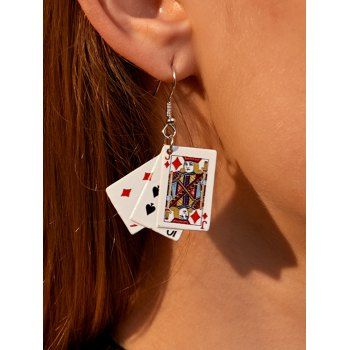















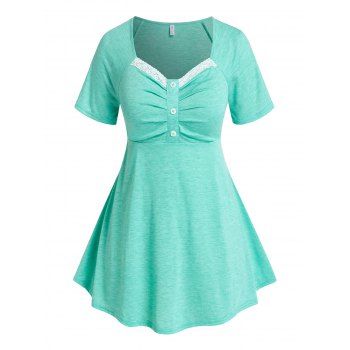
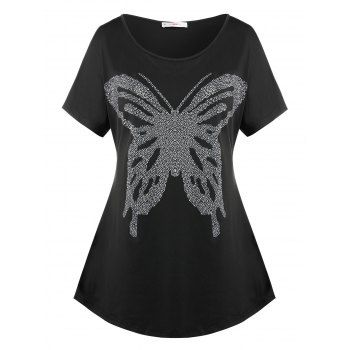



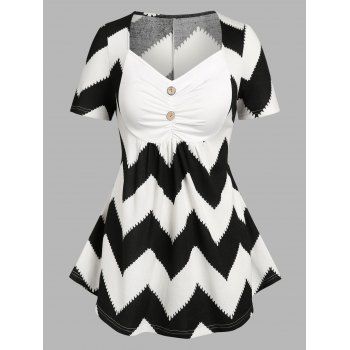




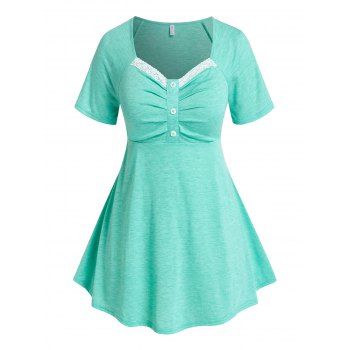





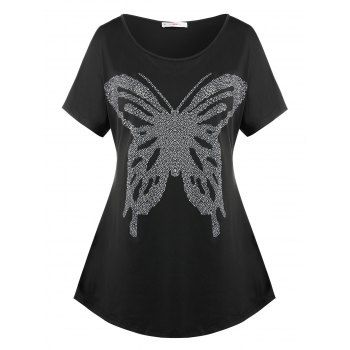
 https://bit.ly/2Fj3Q6h
https://bit.ly/2Fj3Q6h








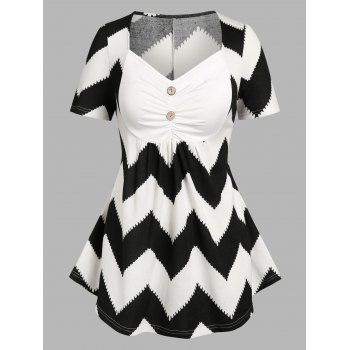

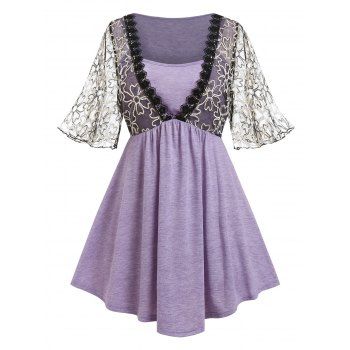



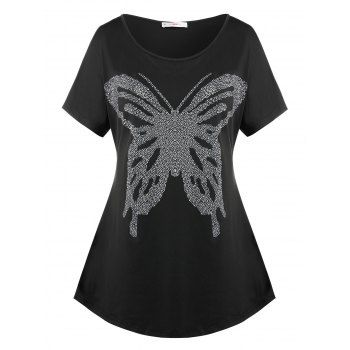

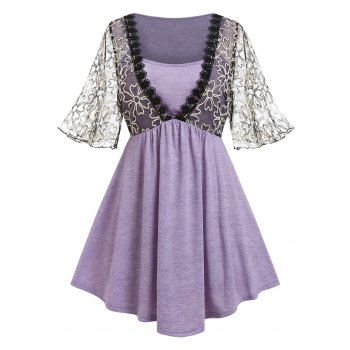









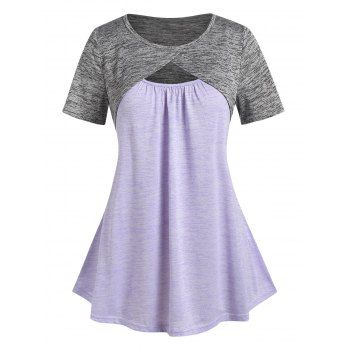


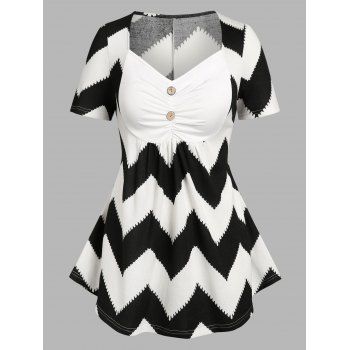









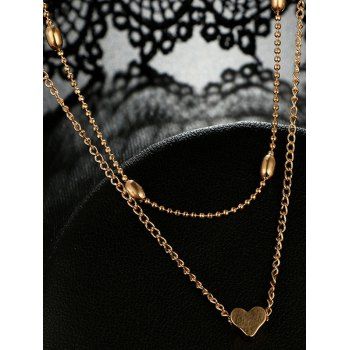







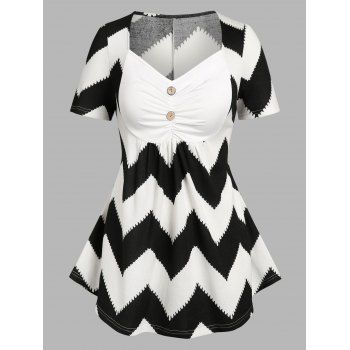








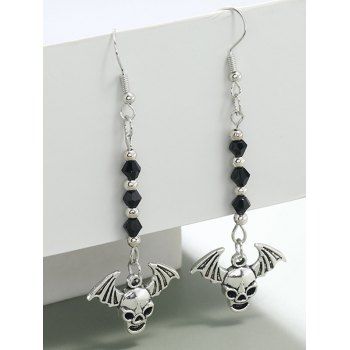




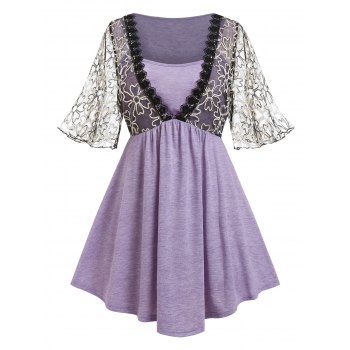










 Ready for some TRADING and INVESTING action?
Ready for some TRADING and INVESTING action?  https://thesecretmindset.com/academy/
https://thesecretmindset.com/academy/


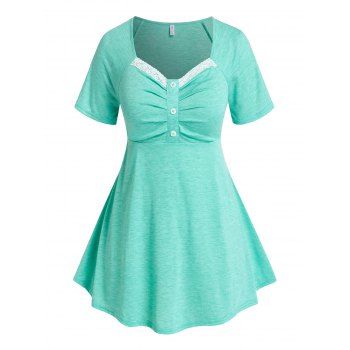

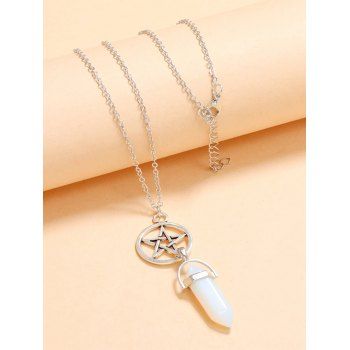
















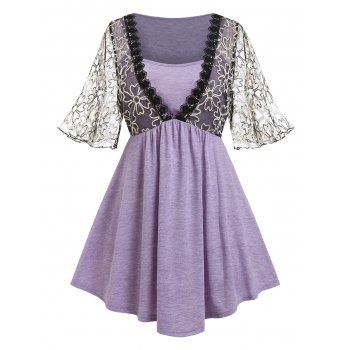
 RESOURCES & LINKS:
RESOURCES & LINKS: If you have any questions, you can send me an email: nickwatkins999@gmail.com
If you have any questions, you can send me an email: nickwatkins999@gmail.com Subscribe: https://bit.ly/ForexNickSubscribe to learn more secret Forex trading tips.
Subscribe: https://bit.ly/ForexNickSubscribe to learn more secret Forex trading tips.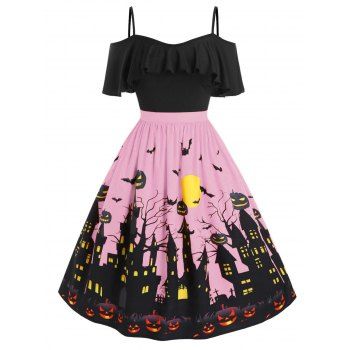

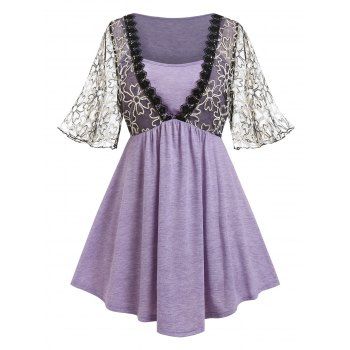

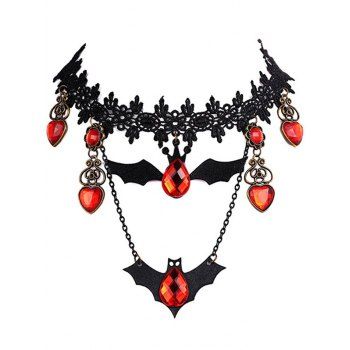

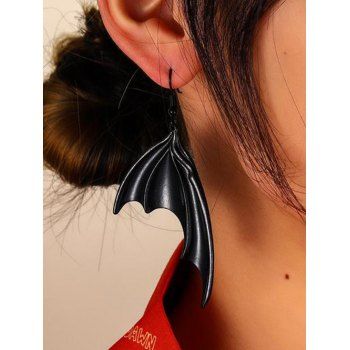



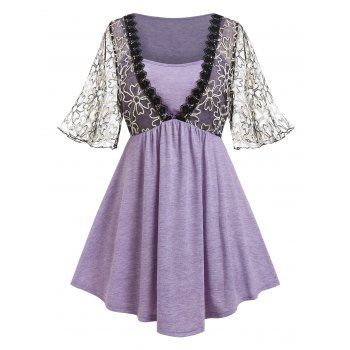










No comments:
Post a Comment